Advertisement
Ahoy! Check Out These Shipwrecks You Can Visit
By Sierra McCleary-Harris
5 min read
Advertisement - Continue reading below
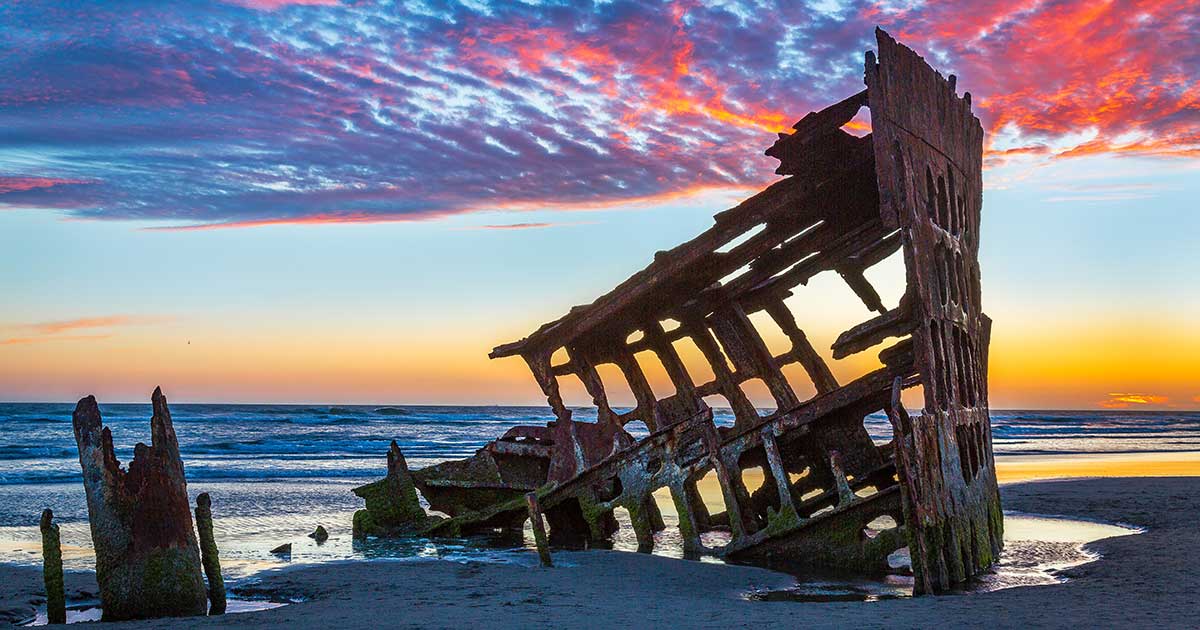
Everyone loves a good pirate story. Whether it’s told to you over a campfire when you’re a kid, you’re rewatching The Princess Bride for the umpteenth time, or you and your family are checking out the Pirates of the Caribbean exhibit at Disneyland, you’ve probably dreamt about having your own swashbuckling adventure a time or two (or 10, depending on who you are). And what’s at the center of every great pirate tale? A ship — and often, unfortunately, a shipwreck. Well, what if we told you there were real live shipwrecks you can visit?
That’s right, there are legit shipwrecks you can visit. And — this may seem obvious because, you know, water — but most of them are located on or near gorgeous beaches with breathtaking views. So instead of jetting off to some tried and true vacation destination, why not mix it up a bit, embrace a bit of adventure, and check out a shipwreck? From Namibia and Scotland to as close as Oregon, there are some not-at-all spooky shipwrecks just wasting away, waiting for some tourists to hop aboard. Read more about each wreck below!
Eduard Bohlen, Namibia
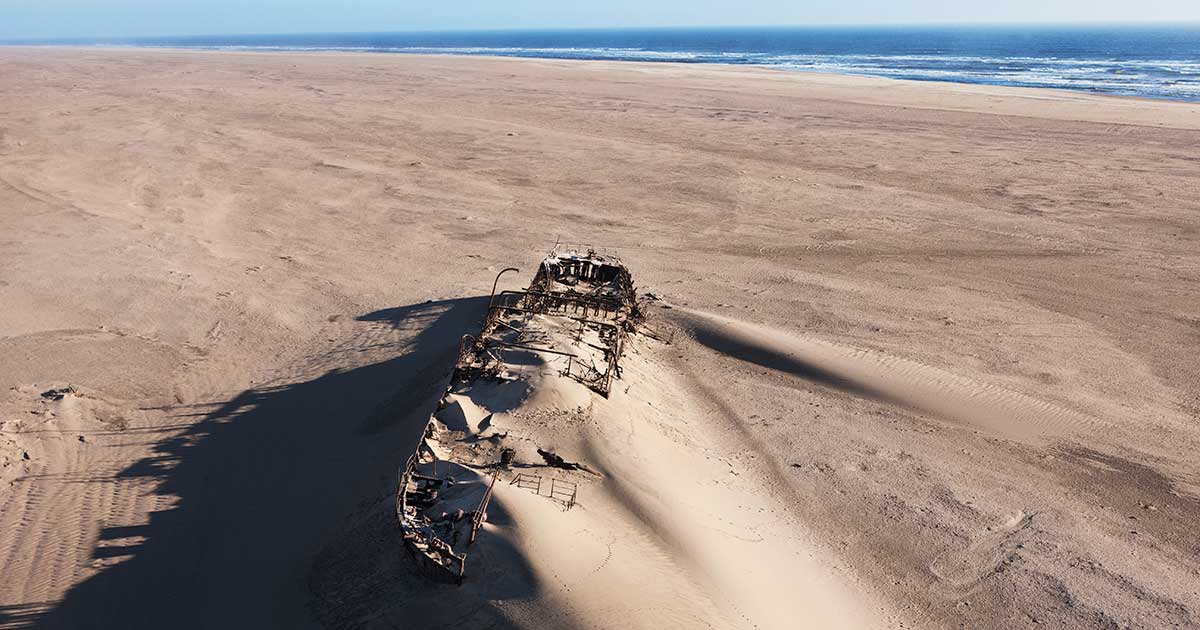
Far from a work of beauty, Eduard Boulen was a 2,272 ton cargo ship, dating back to 1891. Unfortunately, the ship wasn’t destined to last. In 1909, less than 20 years after its first voyage, Eduard Boulen ran ashore on the Skeleton Coast of German Southwest Africa, an area now known as Namibia. After hitting a thick patch of fog, the ship’s captain was unable to detect the shoreline.
The ship’s remains are still on the beach at Conception Bay, albeit partially buried, more than 100 years later. In fact, if shipwrecks are your thing (clearly they are, or why else are you reading this?), Eduard Bohlen’s carcass is nearby what’s left of the Otavi and MV Dudedin Star wrecks. Apparently the Skeleton Coast was aptly named.
Olympia, Greece
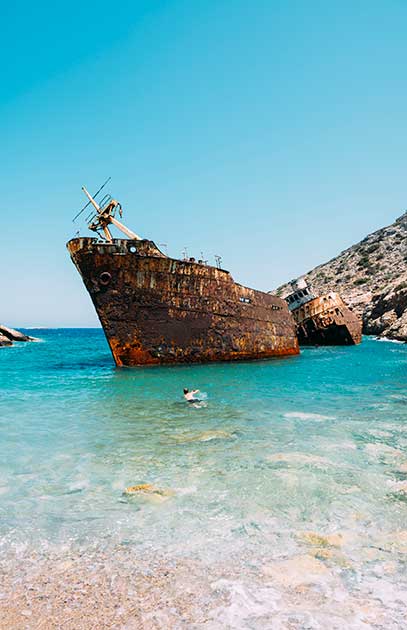
One of the more famous shipwrecks on our list, Olympia lies near Kalotaritissa beach off the coast of Amorgos, an island in Greece. The story goes that the ship, needing some shelter from strong winds, approached Amorgos in early 1980. The captain reportedly tried to anchor near the beach, but those same strong winds stepped in and threw the ship onto the rocks.
As for fame, the wreck has been the topic of documentaries, travel shows, and even a feature film, Luc Besson’s The Big Blue (1988).
Fun fact: In a cruel, ironic twist, Olympia’s original name was Inland.
Bowling Harbour Ship Graveyard, Scotland
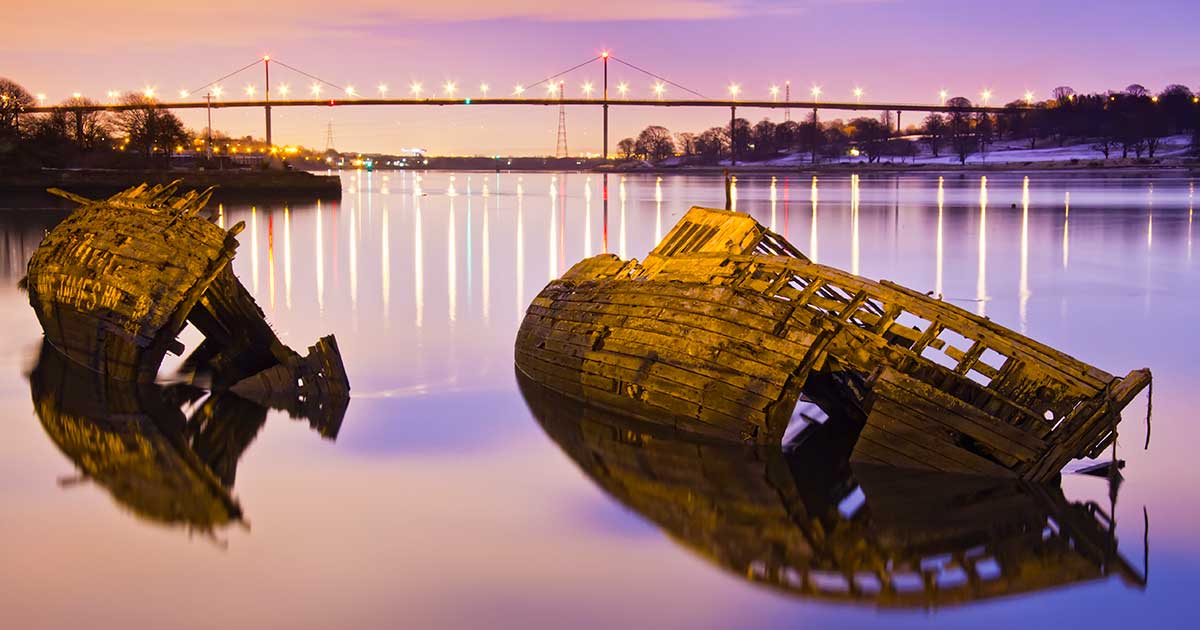
Not much is known about the origins of the wreckage at Scotland’s Bowling Harbour ship graveyard, which has been home to moored ships in various states of disrepair since the mid-20th century, when the River Clyde’s shipping industry reportedly dimmed. Clusters of wood and metal that used to be ships and fishing boats litter the beach and shoreline.
Recently, the wreckage has garnered attention for its inclusion in a photography collection of abandoned car depots, railways, and wrecked boats. Proceeds from the book, titled Rack & Ruin and shot by David McKeran, benefit Glasgow City Mission, a charity offering support to homeless and disadvantaged people.
Uluburun Wreck, Turkey
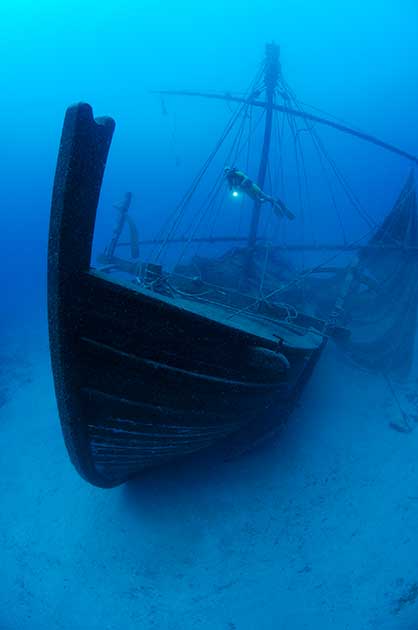
Dating back to the 14th century BC, the Uluburun shipwreck was discovered in 1982, roughly six miles southeast of Kaş, a small tourist town in southwestern Turkey. A local sponge diver by the name of Mehmed Çakir happened upon the wreck. It would take 11 three- to four-month diving campaigns to surface what’s now considered one of the most impressive collections of Late Bronze Age artifacts.
Uluburun also is the only shipwreck on our list that remains submerged. You’ll have to dive down to see what remains of the wrecked vessel, but if the photo above does it any justice at all, you’re not likely to be disappointed.
MV Panagiotis, Greece
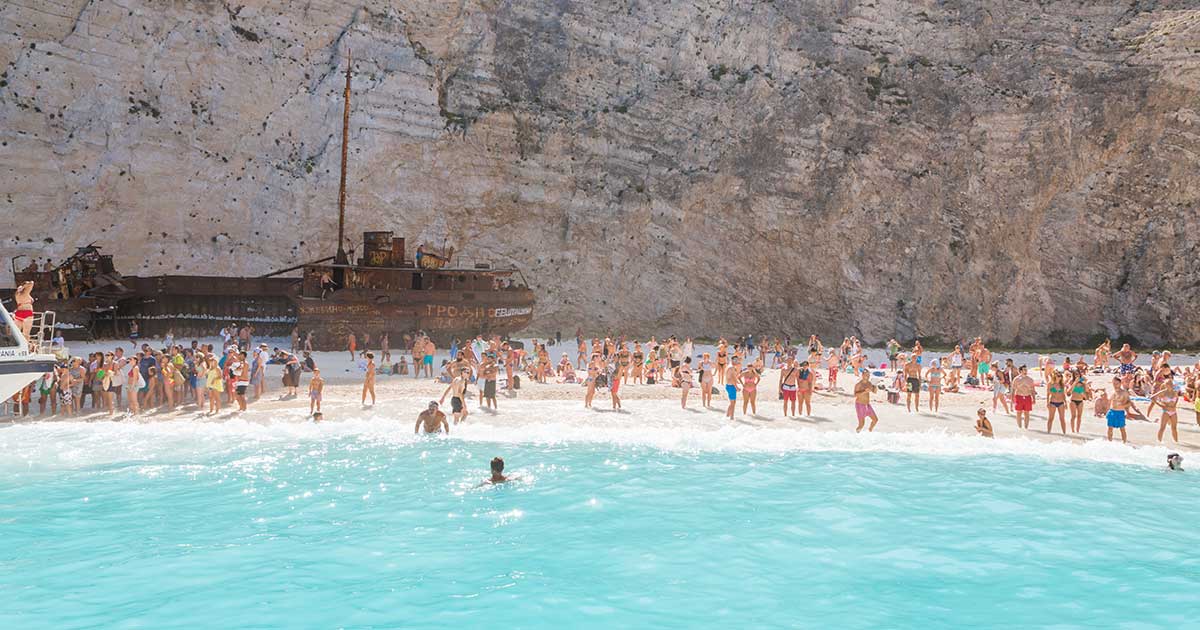
Nestled in a cove on the coast of Zakynthos, on Navagio Beach, lies what remains of the MV Panagiotis. Now just a tourist attraction, the ship was originally built in 1937 in Bowling (on the same River Clyde mentioned above), measuring 157 feet long by 26 feet wide. Legend has it that it was used as a smuggling ship, reportedly full of contraband cigarettes from Turkey, when it hit rough weather and ran ashore in 1980. (Is it just us, or were the 1980s a terrible time to be a ship captain?!)
Fun fact: Navagio is Greek for shipwreck.
SS Maheno, Australia
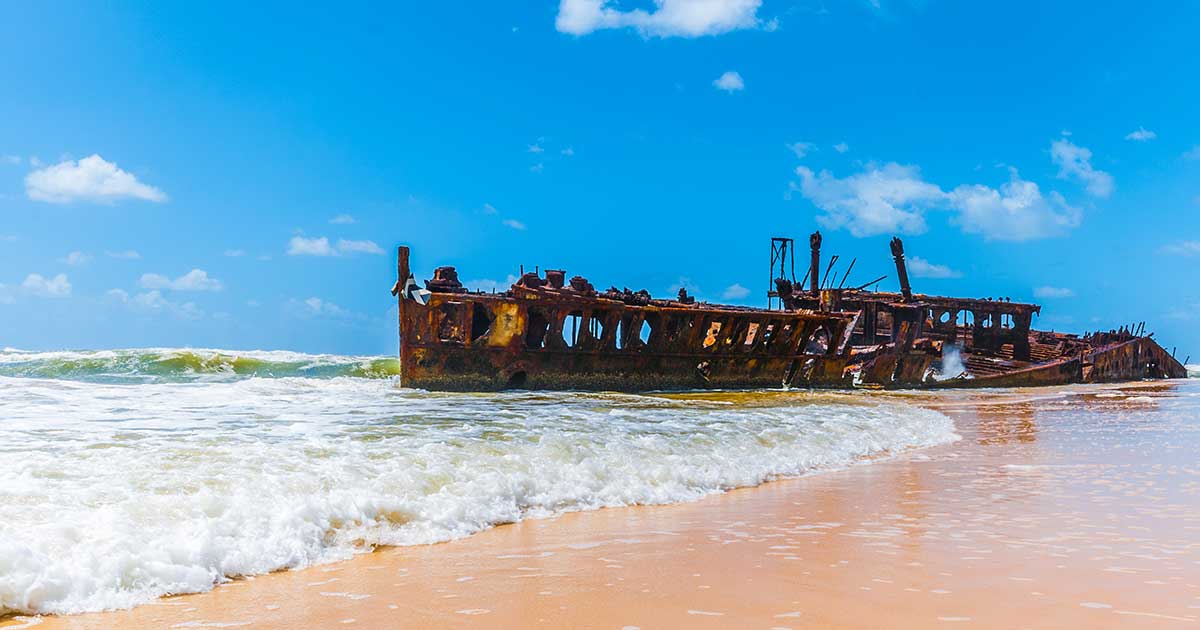
SS Maheno, an ocean liner built in 1905, was used by the New Zealand Naval Forces as a hospital ship during World War I. With her medical crew of five doctors, 61 orderlies, a matron, and 13 nursing sisters, the ship ferried wounded soldiers and casualties away from battle. When the Great War ended in 1918, SS Maheno was returned to her owner, Union Steam Ship Company of New Zealand Limited, to be used commercially.
Unfortunately, that life would be short-lived. In 1935, the ship was attached to the 1,758-ton Oonah ship via wire rope, headed to a ship-breaker’s yard in Japan. The ships hit a cyclone about 50 miles from the coast of Sydney, were separated, and SS Maheno drifted away and disappeared. It was found, beached off Fraser Island, a few days later.
Peter Iredale, United States (Oregon)
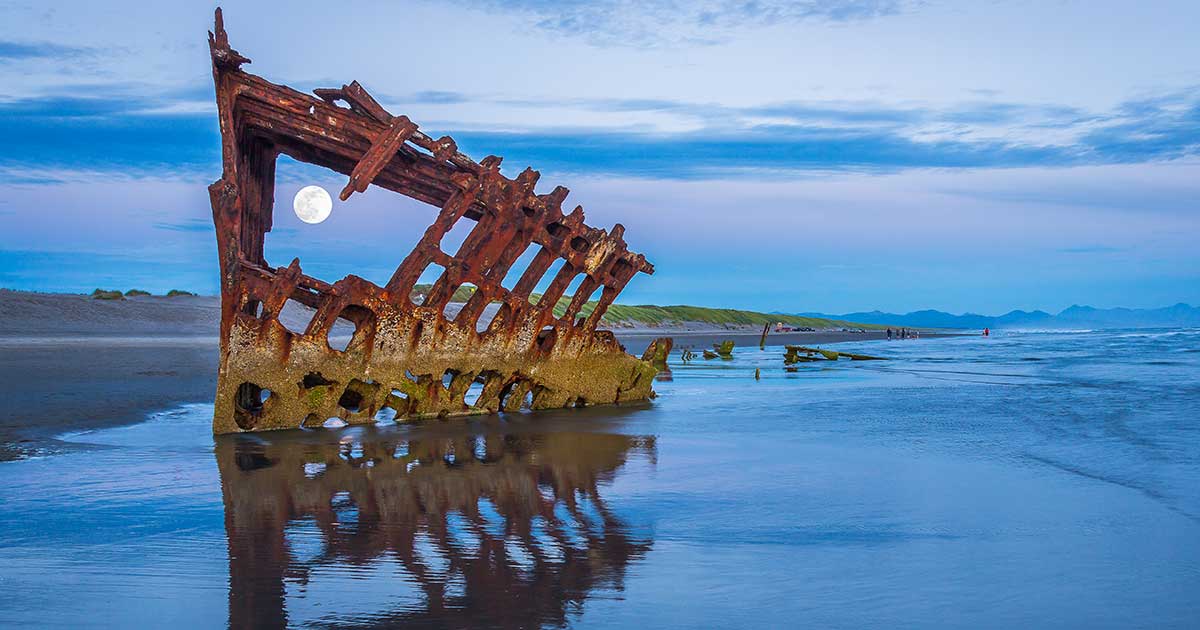
Peter Iredale is the only ship on our list from the famed Graveyard of the Pacific, a stretch of the Pacific Northwest where unpredictable weather is responsible for roughly 2,000 shipwrecks. Named for its owner, England-based businessman Peter Iredale, the four-mast sailing ship was built in 1890. Not much later, in 1906, the ship left Mexico and headed for Portland, Oregon. Strong winds and a high tide thrust the ship ashore. Luckily, there were no casualties. That didn’t stop the Naval Court from holding an inquiry to determine who was to blame for the wreck. The investigation didn’t uncover any foul play, though; in fact, the captain and his officers were commended for their valiant rescue efforts.
Today, what’s left of the wreckage is a tourist attraction. It’s one of the most accessible of the Graveyard’s wrecks.
Dimitrios, Greece
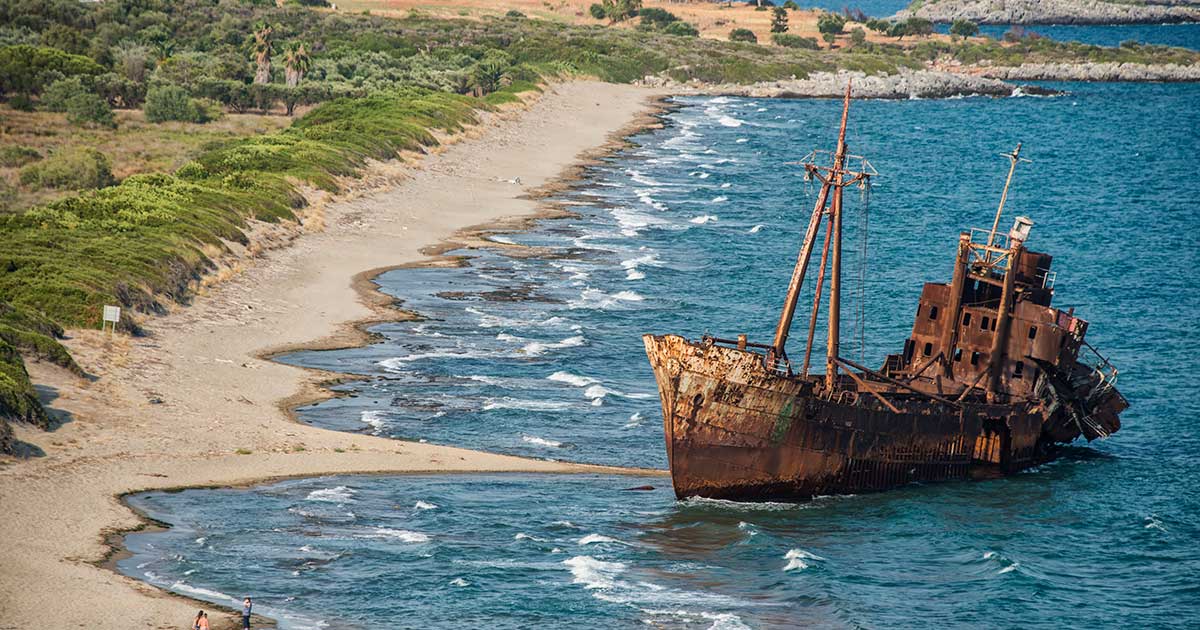
Dimitrios has an interesting history. The cargo ship, built in 1950 in Denmark, was emergency docked in Gythio in December 1980 so its captain could seek medical attention. A crew was left behind to safeguard the ship, but due to some financial problems, they were let go. She remained docked there until 1981, when severe weather reportedly swept her two miles away. Dimitrios was temporarily anchored — to no avail — and was swept away again, finally ending up on the Valtaki beach in December 1981.
The ship was abandoned after that; we can only imagine that the owners decided she was more trouble than she was worth — literally. The ship’s accessibility and gorgeous location make her quite popular with tourists like yourselves.
Advertisement - Continue reading below
